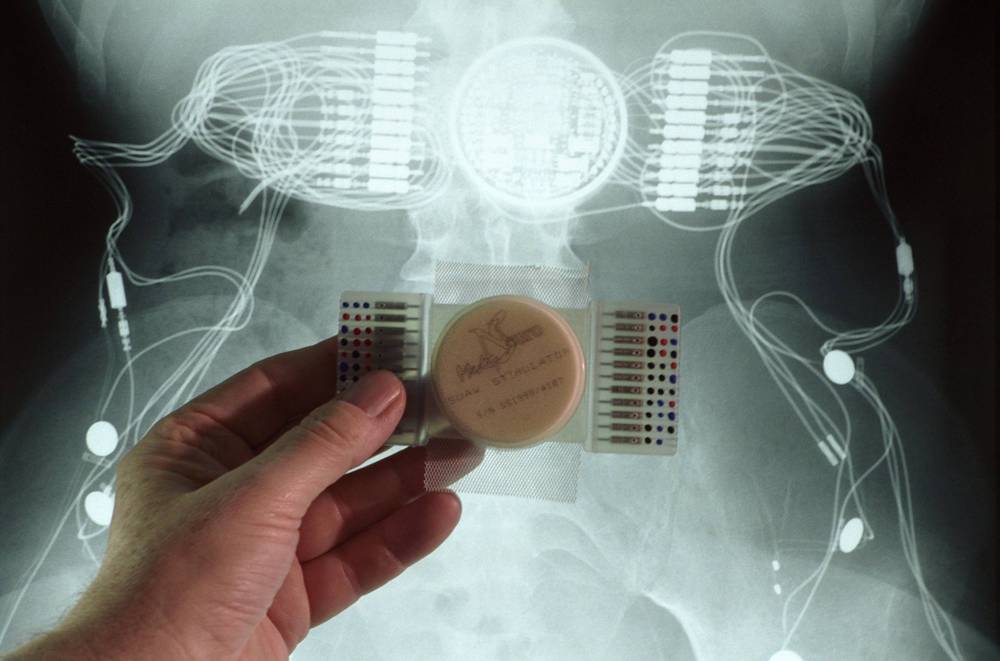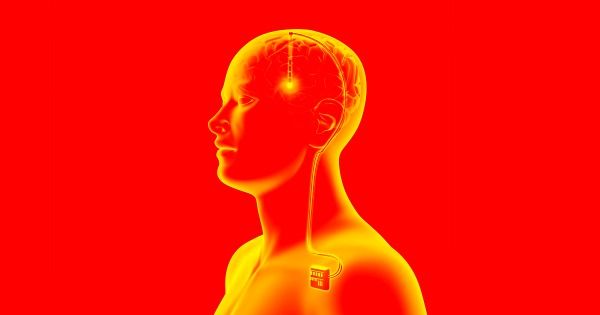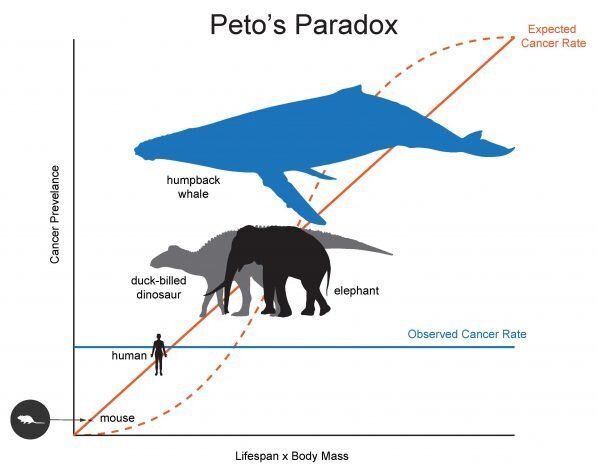Page 8859
May 9, 2019
The power of randomization: Magnetic skyrmions for novel computer technology
Posted by Quinn Sena in categories: computing, entertainment, nanotechnology
Researchers at Johannes Gutenberg University Mainz (JGU) have succeeded in developing a key constituent of a novel unconventional computing concept. This constituent employs the same magnetic structures that are being researched in connection with storing electronic data on shift registers known as racetracks. In this, researchers investigate so-called skyrmions, which are magnetic vortex-like structures, as potential bit units for data storage. However, the recently announced new approach has a particular relevance to probabilistic computing. This is an alternative concept for electronic data processing where information is transferred in the form of probabilities rather than in the conventional binary form of 1 and 0. The number 2/3, for instance, could be expressed as a long sequence of 1 and 0 digits, with 2/3 being ones and 1/3 being zeros. The key element lacking in this approach was a functioning bit reshuffler, i.e., a device that randomly rearranges a sequence of digits without changing the total number of 1s and 0s in the sequence. That is exactly what the skyrmions are intended to achieve. The results of this research have been published in the journal Nature Nanotechnology.
The researchers used thin magnetic metallic films for their investigations. These were examined in Mainz under a special microscope that made the magnetic alignments in the metallic films visible. The films have the special characteristic of being magnetized in vertical alignment to the film plane, which makes stabilization of the magnetic skyrmions possible in the first place. Skyrmions can basically be imagined as small magnetic vortices, similar to hair whorls. These structures exhibit a so-called topological stabilization that protects them from collapsing too easily – as a hair whorl resists being easily straightened. It is precisely this characteristic that makes skyrmions very promising when it comes to use in technical applications such as, in this particular case, information storage. The advantage is that the increased stability reduces the probability of unintentional data loss and ensures the overall quantity of bits is maintained.
May 9, 2019
A.I. Can Now Read Your Thoughts—And Turn Them Into Words and Images
Posted by Quinn Sena in category: robotics/AI
May 9, 2019
Dark matter: ‘Rarest event EVER’ recorded by scientists — lasting 18 SEXTILLION years
Posted by Quinn Sena in category: cosmology
A PROCESS taking more than one trillion times the age of the universe to complete has finally been measured by scientists hunting for dark matter.
May 9, 2019
Machine learning reveals metabolic pathways disrupted by the drugs, offering new targets to combat resistance
Posted by Quinn Sena in categories: biotech/medical, robotics/AI
Most antibiotics work by interfering with critical functions such as DNA replication or construction of the bacterial cell wall. However, these mechanisms represent only part of the full picture of how antibiotics act.
In a new study of antibiotic action, MIT researchers developed a new machine-learning approach to discover an additional mechanism that helps some antibiotics kill bacteria. This secondary mechanism involves activating the bacterial metabolism of nucleotides that the cells need to replicate their DNA.
“There are dramatic energy demands placed on the cell as a result of the drug stress. These energy demands require a metabolic response, and some of the metabolic byproducts are toxic and help contribute to killing the cells,” says James Collins, the Termeer Professor of Medical Engineering and Science in MIT’s Institute for Medical Engineering and Science (IMES) and Department of Biological Engineering, and the senior author of the study.
May 9, 2019
Generating multiphoton quantum states on silicon
Posted by Quinn Sena in categories: computing, quantum physics
In a recent study now published in Light: Science & Applications, Ming Zhang, Lan-Tian Feng and an interdisciplinary team of researchers at the departments of quantum information, quantum physics and modern optical instrumentation in China, detailed a new technique to generate photon-pairs for use in quantum devices. In the study, they used a method known as four-wave mixing to allow three electromagnetic fields to interact and produce a fourth field. The team created the quantum states in a silicon nanophotonic spiral waveguide to produce bright, tunable, stable and scalable multiphoton quantum states. The technology is comparable with the existing fiber and integrated circuit manufacturing processes to pave the way to engineer a range of new generation photonic quantum technologies for applications in quantum communication, computation and imaging. The multiphoton quantum sources detailed in the work will play a critical role to improve the existing understanding of quantum information.
The scientists generated multiphoton quantum states using a single-silicon nanophotonic waveguide and detected four-photon states with a low pump power of 600 µW to achieve experimental multiphoton quantum interference verified with quantum state tomography. Zhang and Feng et al. recorded the quantum interference visibilities at a value greater than 95 percent with high fidelity. The multiphoton quantum source is fully compatible with on-chip processes of quantum manipulation and quantum detection to form large-scale quantum photonic integrated circuits (QPICs). The work has significant potential for multiphoton quantum research.
Multiphoton quantum sources are critical to build several practical platforms for quantum communication, computation, simulation and metrology. Physicists have made great efforts to realize high quality, bright and scalable multiphoton quantum states in previous work, to activate powerful quantum technologies by multiplexing several biphoton sources to generate eight-photon and 10-photon entanglement. However, the efficacy of such multiplexing systems decreased with the number of entangled photons. At present, quantum photonic integrated circuits (QPCIs) and silicon-on-insulator (SOI) technology remain promising to realize high quality photon-pair sources.
Continue reading “Generating multiphoton quantum states on silicon” »
May 9, 2019
Researchers advance understandings of the cellular mechanisms driving rheumatoid arthritis
Posted by Quinn Sena in categories: biotech/medical, futurism
Newly identified subsets of cell types present in joint tissue in people with rheumatoid arthritis and how they interact may explain why only some people respond to existing medications, according to two studies by co-senior author Laura Donlin, Ph.D., Co-Director of the Derfner Foundation Precision Medicine Laboratory at Hospital for Special Surgery (HSS) and collaborating colleagues. The findings suggest exciting new targets for developing precision medicine strategies in the future.
Rheumatoid arthritis (RA) is an autoimmune disease that affects the joints. The immune system mistakenly perceives joint tissue as a harmful invader, like a bacteria or virus, and attacks it, causing inflammation, pain and swelling. RA affects an estimated 1.3 million Americans, about 1% of the population. Critical unmet needs in RA treatment are medications that effectively treat all people with RA, especially those who do not respond to disease-modifying antirheumatic drugs (DMARDs) or biologics.
RA involves a complex interplay between many different types of cells—including T cells, B cells, monocytes and fibroblasts—but the specific subtypes that drive disease progression are largely undefined. Understanding these cell types more precisely may hold valuable information in developing new treatments.
May 9, 2019
In China, Surgeons Are Treating Addiction With Brain Implants
Posted by Quinn Sena in categories: biotech/medical, neuroscience
Deep brain stimulation (DBS), an experimental technology that involves implanting a pacemaker-like device in a patient’s brain to send electrical impulses, is a hotly debated subject in the field of medicine. It’s an inherently risky procedure and the exact effects on the human brain aren’t yet fully understood.
But some practitioners believe it could be a way to alleviate the symptoms of depression or even help treat Alzheimer’s — and now they suspect it could help with drug addiction as well.
In a world’s first, according to the Associated Press, a patient in Shanghai’s Ruijin Hospital had a DBS device implanted in his brain to treat his addiction to methamphetamine.
Continue reading “In China, Surgeons Are Treating Addiction With Brain Implants” »
May 9, 2019
Researchers break down DNA of world’s largest mammals to discover how whales defy the cancer odds
Posted by Quinn Sena in categories: biotech/medical, computing
Scientists know that age and weight are risk factors in the development of cancer. That should mean that whales, which include some of the largest and longest-lived animals on Earth, have an outsized risk of developing cancer.
But they don’t. Instead, they are less likely to develop or die of this enigmatic disease. The same is true of elephants and dinosaurs’ living relatives, birds. Marc Tollis, an assistant professor in the School of Informatics, Computing, and Cyber Systems at Northern Arizona University, wants to know why.
Tollis led a team of scientists from Arizona State University, the University of Groningen in the Netherlands, the Center for Coastal Studies in Massachusetts and nine other institutions worldwide to study potential cancer suppression mechanisms in cetaceans, the mammalian group that includes whales, dolphins and porpoises. Their findings, which picked apart the genome of the humpback whale, as well as the genomes of nine other cetaceans, in order to determine how their cancer defenses are so effective, were published today in Molecular Biology and Evolution.
May 9, 2019
Risperidone-Associated Neuroleptic Malignant Syndrome in an Inpatient With Schizophrenia, With Successful Rechallenge and 3 Year Follow-Up
Posted by Quinn Sena in categories: biotech/medical, food, neuroscience
Neuroleptic malignant syndrome (NMS) is rare but one of the most serious adverse effects of antipsychotics. Here, we report a case of risperidone-associated NMS in which a successful rechallenge of risperidone was observed with a positive follow-up. A 47-year-old female with schizophrenia was treated with risperidone 4 mg/d for 8 months in 2009 and was admitted to our hospital in 2015 owing to violent behavior under persecutory delusions. Risperidone 2 mg/d was initiated and increased to 4 mg/d 54 days later. Further, long-acting injectable (LAI) risperidone 25 mg per 2 weeks was added on hospital day 15. On hospital day 116, NMS occurred and thus we discontinued all antipsychotics including LAI risperidone, then NMS improved. We resumed LAI risperidone 25 mg per 2 weeks on hospital day 148, thus we waited for 22 days before re-starting the drug treatment. She was discharged on hospital day 371, then switched to LAI paliperidone 150 mg per 4 weeks 2 months later. At the time of a follow-up 3 years later, NMS had not reoccurred. This case reports on an unusual presentation of NMS in which no hyperthermia was observed. Furthermore, this case indicated that NMS may occur in a dose-dependent manner. In conclusion, this case reported important information for clinicians with regard to antipsychotic drug rechallenges and proper dosing of APs to avoid or reverse NMS.
A 47-year-old female with schizophrenia and without other neuropsychiatric or systemic illnesses was treated with risperidone 4 mg/d for 8 months in 2009. In 2015, she was admitted owing to the violent behavior of attacking her mother-in-law under persecutory delusion with the belief that her mother-in-law was going to murder her and auditory hallucination of hearing her mother-in-law criticize her behind her back. Risperidone 2 mg/d was initiated and increased to 4 mg/d 54 days later. Further, long-acting injectable (LAI) risperidone 25 mg per 2 weeks was added on hospital day 15. She did not receive any mood stabilizers on admission, such as lithium, carbamazepine, valproate. During treatment, the patient complained of soreness and weakness of her whole body, and refused to eat or ambulate on hospital day 116, at which point she was tachycardic with a bpm of 116, but afebrile (36.4°C) with stable blood pressure (113÷72 mm Hg).

















